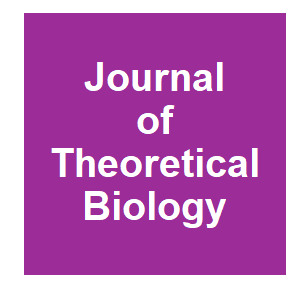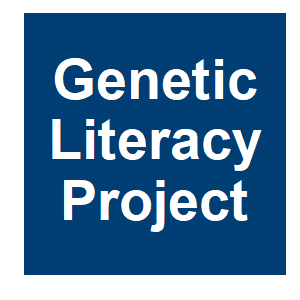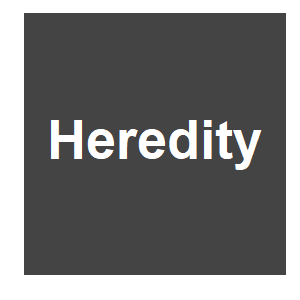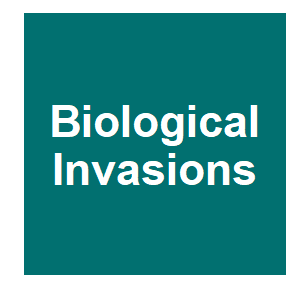
Keywords: extinction

|
Gene drives for the extinction of wild metapopulationsJason W. Olejarz, Martin A. Nowak, Journal of Theoretical Biology, 2023.
Population-suppressing gene drives may be capable of extinguishing wild populations, with proposed applications in conservation, agriculture, and public health. However, unintended and potentially disastrous consequences of release of drive-engineered individuals are extremely ... Keywords: Daughterless, Eradication, extinction, fish, genetic biocontrol, invasive species, Nonlinear dynamical system, Trojan chromosomes, Trojan Y |

|
Justifying an Intentional Species Extinction: The Case of Anopheles gambiaeD. E. Callies and Y. Rohwer, Environmental Values, 31:193-210. 2022.
Each year, over 200 million people are infected with the malaria parasite, nearly half a million of whom succumb to the disease. Emerging genetic technologies could, in theory, eliminate the burden of malaria throughout the world by intentionally eradicating the mosquitoes that ... Keywords: Daughterless, Eradication, extinction, fish, genetic biocontrol, invasive species, Nonlinear dynamical system, Trojan chromosomes, Trojan Y |

|
In Our Image: The Ethics of CRISPR Genome EditingJ. C. Eissenberg, Biomolecular Concepts, 12:1-7. 2021.
Here, I discuss the ethics surrounding the transformative CRISPR/Cas9mediated genome editing technology in the contexts of human genome editing to eradicate genetic disease and of gene drive technology to eradicate animal vectors of human disease. Keywords: Daughterless, Eradication, extinction, fish, genetic biocontrol, invasive species, Nonlinear dynamical system, Trojan chromosomes, Trojan Y |

|
Viewpoint: Is there a scientific basis to ban gene drive technology that can rid us of virus-carrying rodents and mosquitoes?K. Vavitas, Genetic Literacy Project, 2020.
Gene drives may be invaluable tools to control the spread of parasites, invasive species, and disease carriers. But the technology has faced strong opposition from activist groups and some mainstream scientists based on environmental and food safety. Are these concerns valid? Keywords: Daughterless, Eradication, extinction, fish, genetic biocontrol, invasive species, Nonlinear dynamical system, Trojan chromosomes, Trojan Y |

|
Recessive Z-linked lethals and the retention of haplotype diversity in a captive butterfly populationI. J. Saccheri, S. Whiteford, C. J. Yung and A. E. van't Hof, Heredity, 2020.
Sex chromosomes are predicted to harbour elevated levels of sexually antagonistic variation due to asymmetries in the heritability of recessive traits in the homogametic versus heterogametic sex. Keywords: Daughterless, Eradication, extinction, fish, genetic biocontrol, invasive species, Nonlinear dynamical system, Trojan chromosomes, Trojan Y |

|
A Y-chromosome shredding gene drive for controlling pest vertebrate populationsProwse, TAAA, F.; Cassey, P.; Thomas, P.; Ross, J. V., eLife, 8:19. 2019.
Self-replicating gene drives that modify sex ratios or infer a fitness cost could be used to control populations of invasive alien species. The targeted deletion of Y sex chromosomes using CRISPR technology offers a new approach for sex bias that could be incorporated within ... Keywords: Daughterless, Eradication, extinction, fish, genetic biocontrol, invasive species, Nonlinear dynamical system, Trojan chromosomes, Trojan Y |

|
Pest demography critically determines the viability of synthetic gene drives for population controlK. E. Wilkins, T. A. A. Prowse, P. Cassey, P. Q. Thomas and J. V. Ross, Mathematical Biosciences, 305:160-169. 2018.
Synthetic gene drives offer a novel solution for the control of invasive alien species. CRISPR-based gene drives can positively bias their own inheritance, and comprise a DNA sequence that is replicated by homologous recombination. Since gene drives can be positioned to silence ... Keywords: Daughterless, Eradication, extinction, fish, genetic biocontrol, invasive species, Nonlinear dynamical system, Trojan chromosomes, Trojan Y |

|
Stochastic models for the Trojan Y-Chromosome eradication strategy of an invasive speciesX. Y. Wang, J. R. Walton and R. D. Parshad, Journal of Biological Dynamics, 10:179-199. 2015.
The Trojan Y-Chromosome (TYC) strategy, an autocidal genetic bio-control method, has been proposed to eliminate invasive alien species. In this work, we develop a Markov jump process model for this strategy, and we verify that there is a positive probability for wild-type females ... Keywords: Daughterless, Eradication, extinction, fish, genetic biocontrol, invasive species, Nonlinear dynamical system, Trojan chromosomes, Trojan Y |

|
Analysis of the Trojan Y-Chromosome eradication strategy for an invasive speciesX. Y. Wang, J. R. Walton, R. D. Parshad, K. Storey and M. Boggess, Journal of Mathematical Biology, 68:1731-1756. 2013.
The Trojan Y-Chromosome (TYC) strategy, an autocidal genetic biocontrol method, has been proposed to eliminate invasive alien species. In this work, we analyze the dynamical system model of the TYC strategy, with the aim of studying the viability of the TYC eradication and ... Keywords: Daughterless, Eradication, extinction, fish, genetic biocontrol, invasive species, Nonlinear dynamical system, Trojan chromosomes, Trojan Y |

|
Combining the Trojan Y chromosome and daughterless carp eradication strategiesJ. L. Teem and J. B. Gutierrez, Biological Invasions, 16:1231-1240. 2013.
The Trojan Y chromosome (TYC) strategy and the daughterless carp (DC) strategy represent two autocidal genetic biocontrol methods for eliminating invasive fish by changing the sex ratio of the population. Each strategy is designed to reduce the number of females in a target ... Keywords: Daughterless, Eradication, extinction, fish, genetic biocontrol, invasive species, Nonlinear dynamical system, Trojan chromosomes, Trojan Y |

|
A comparison of the Trojan Y Chromosome and daughterless carp eradication strategiesJ. L. Teem, J. B. Gutierrez and R. D. Parshad, 16, 16:1217-1230. 2013.
Two autocidal genetic biocontrol methods have been proposed as a means to eliminate invasive fish by changing the sex ratio of the population: the Trojan Y Chromosome (TYC) strategy and the Daughterless Carp (DC) strategy. Both strategies were modeled using ordinary differential ... Keywords: Daughterless, Eradication, extinction, fish, genetic biocontrol, invasive species, Nonlinear dynamical system, Trojan chromosomes, Trojan Y |

Contact
David O’Brochta
Foundation for the
National Institutes of Health
geneconvenevi@fnih.org
RSS

